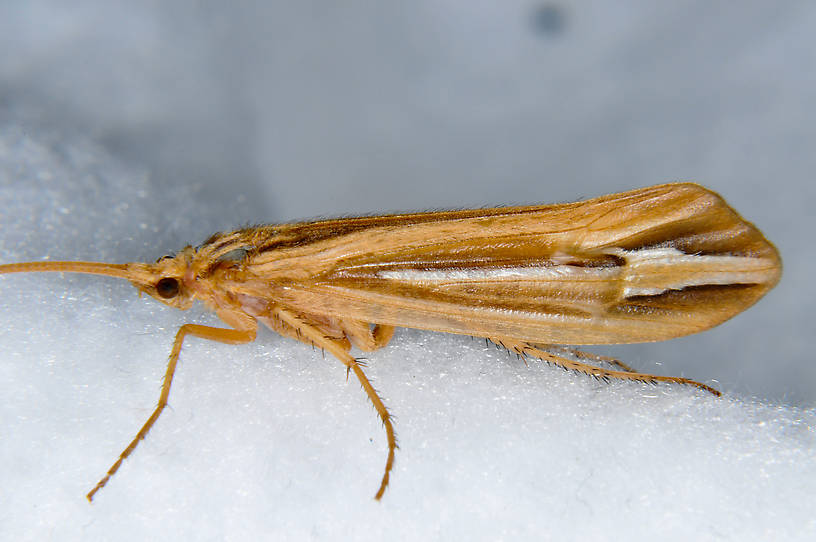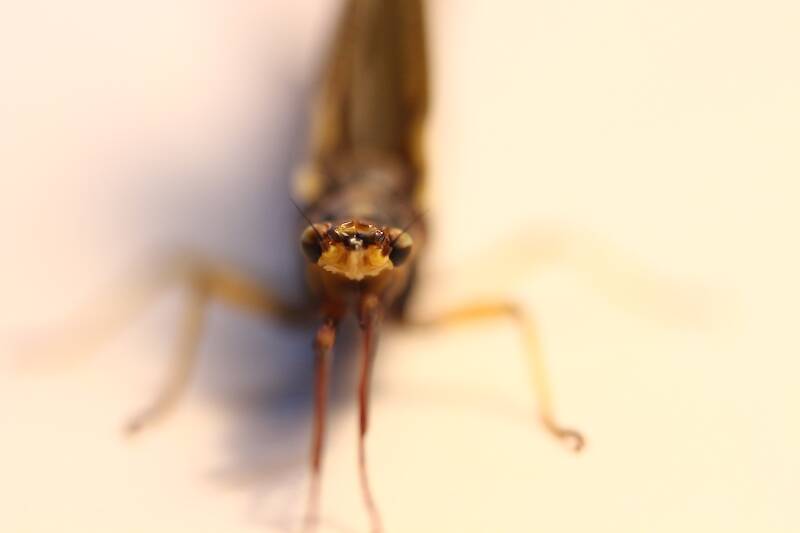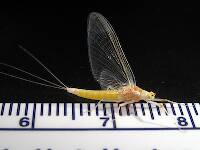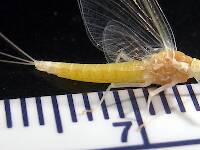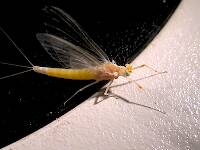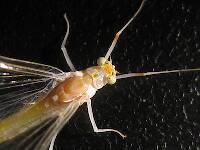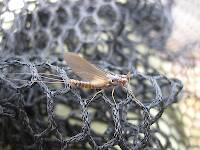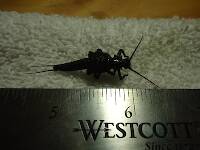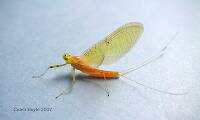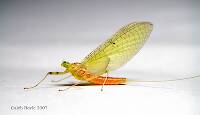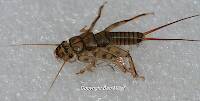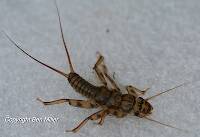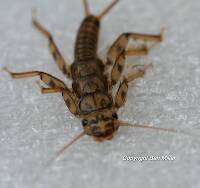
Blue-winged Olives
Baetis
Tiny Baetis mayflies are perhaps the most commonly encountered and imitated by anglers on all American trout streams due to their great abundance, widespread distribution, and trout-friendly emergence habits.
Featured on the forum

Nymphs of this species were fairly common in late-winter kick net samples from the upper Yakima River. Although I could not find a key to species of Zapada nymphs, a revision of the Nemouridae family by Baumann (1975) includes the following helpful sentence: "2 cervical gills on each side of midline, 1 arising inside and 1 outside of lateral cervical sclerites, usually single and elongate, sometimes constricted but with 3 or 4 branches arising beyond gill base in Zapada cinctipes." This specimen clearly has the branches and is within the range of that species.

Troutnut is a project started in 2003 by salmonid ecologist Jason "Troutnut" Neuswanger to help anglers and
fly tyers unabashedly embrace the entomological side of the sport. Learn more about Troutnut or
support the project for an enhanced experience here.
JpMcKenzie on Dec 16, 2017December 16th, 2017, 4:12 am EST
Hey! How would you tell this is a female? thank you!
Jean-Philip, Mckenzie river Fly Fishing Lodge guide, Labrador.
Adventure & Entomology passionate!
Adventure & Entomology passionate!
Creno on Dec 16, 2017December 16th, 2017, 11:35 am EST
probably cannot be sure from this pic only. If you could clearly see the palps, a male limnephilid has 3 palpal segments while the female has 5. I cannot see the palpal segments clearly in this specimen. Since Bob Newell took this pic it is likely he kept the specimen and could look at it with a microscope or other magnification. The females of Hesperophylax are easily separated to species based on their genitalia. Alot easier than the males.
Quick Reply
Related Discussions
Topic
Replies
Last Reply
1
Oct 19, 2006
by Troutnut
by Troutnut
3
Sep 4, 2012
by Entoman
by Entoman
7
Sep 18, 2006
by Troutnut
by Troutnut
7
May 9, 2012
by Entoman
by Entoman
8
Jun 5, 2007
by Dinerobyn
by Dinerobyn


